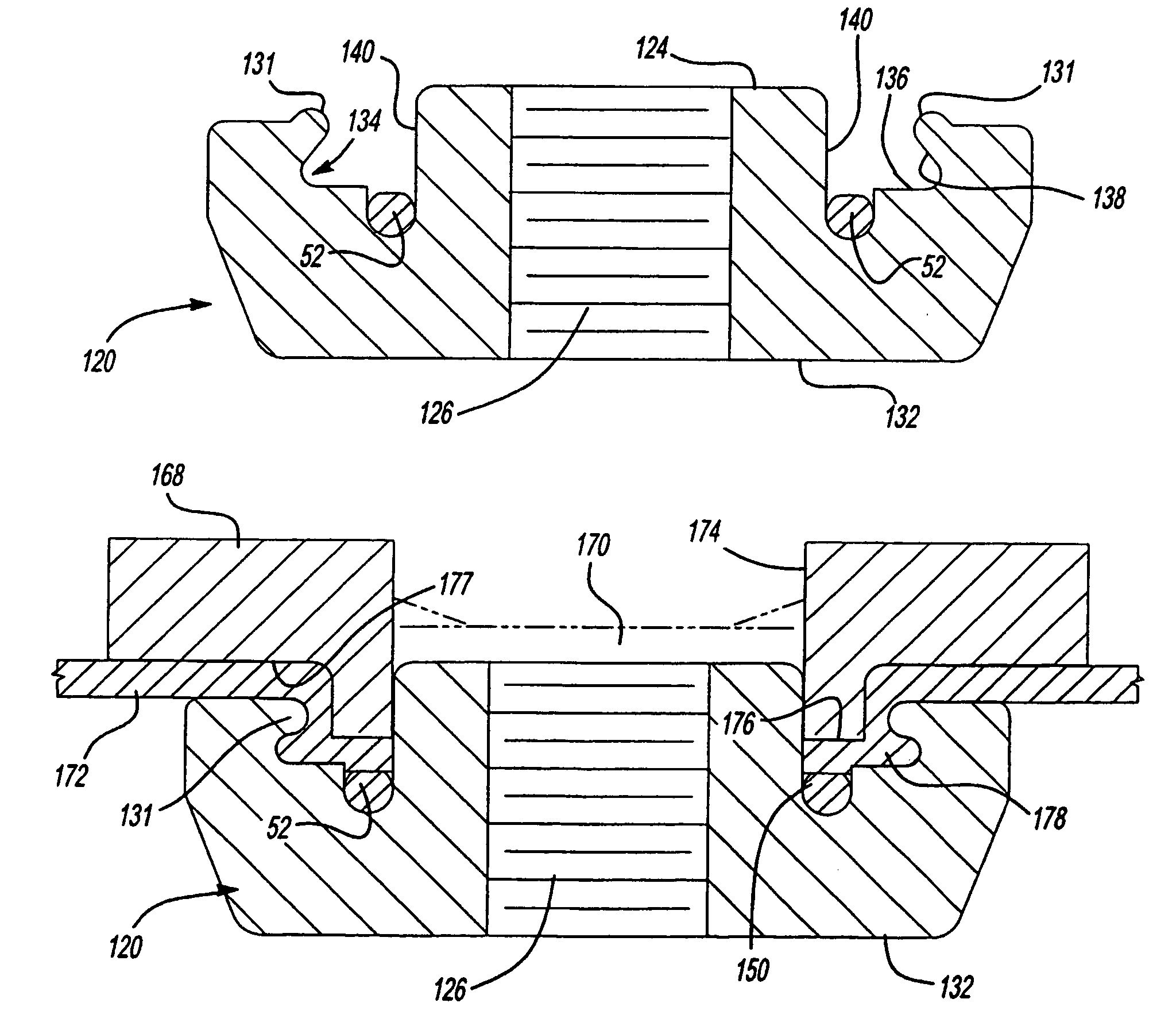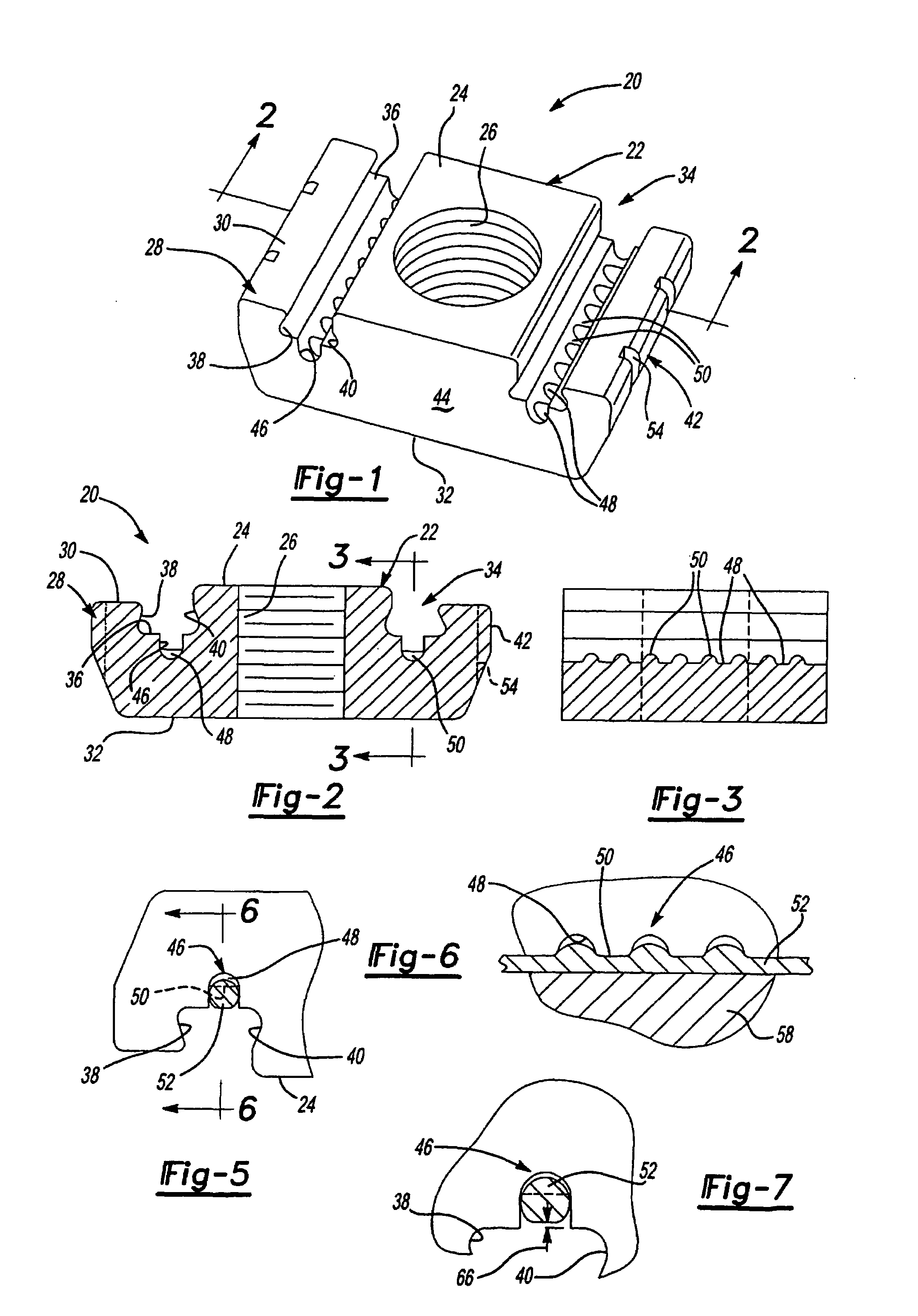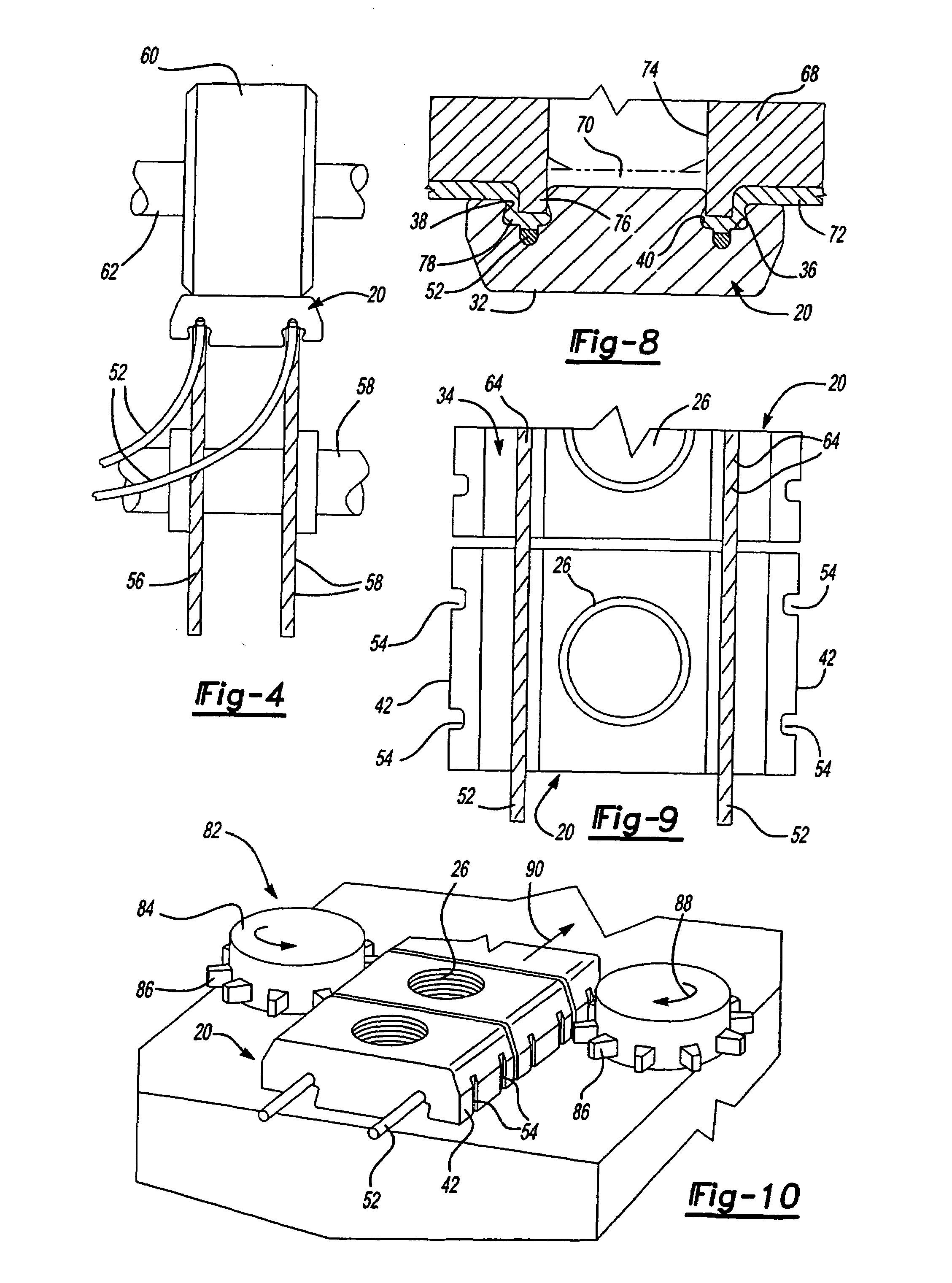Self-attaching fastener systems
a fastener and self-attaching technology, applied in the direction of threaded fasteners, screwing, manufacturing tools, etc., can solve the problems of reducing bearing area, strip may not fully engage the stop, and the bore may not be accurately centered in the pilot portion, so as to prevent the movement of the fastener, eliminate the damage to the thread cylinder, and accurately locate the nut bore in the fastener
- Summary
- Abstract
- Description
- Claims
- Application Information
AI Technical Summary
Benefits of technology
Problems solved by technology
Method used
Image
Examples
Embodiment Construction
[0038]As set forth above, the present invention relates to fastener systems, particularly but not exclusively self-attaching fastener systems, including preoriented self-clinching and self-piercing and clinching nuts suitable for mass production applications, wherein the fastener is permanently installed in a metal panel. FIGS. 1 to 3 illustrate one preferred embodiment of a self-attaching fastener 20 of this invention. The self-attaching fastener 20 illustrated in FIGS. 1 to 3 may be rolled from steel bar stock as described in the above-referenced U.S. Pat. No. 3,711,931, the disclosure of which is incorporated herein by reference. Further, as described above, the self-attaching fastener illustrated in FIGS. 1 to 3 may be used either as a self-clinching fastener, wherein the panel to which it is attached includes an opening configured to receive the central pilot portion 22 or a piercing and clinching fastener, wherein the top face or piercing face 24 of the pilot portion pierces a...
PUM
 Login to View More
Login to View More Abstract
Description
Claims
Application Information
 Login to View More
Login to View More - R&D
- Intellectual Property
- Life Sciences
- Materials
- Tech Scout
- Unparalleled Data Quality
- Higher Quality Content
- 60% Fewer Hallucinations
Browse by: Latest US Patents, China's latest patents, Technical Efficacy Thesaurus, Application Domain, Technology Topic, Popular Technical Reports.
© 2025 PatSnap. All rights reserved.Legal|Privacy policy|Modern Slavery Act Transparency Statement|Sitemap|About US| Contact US: help@patsnap.com



